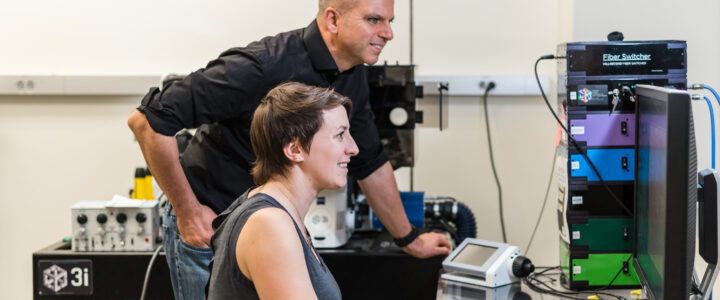With a $90,000 grant from FRAXA, Dr. McCullagh and Dr. Achem Klug at the University of Colorado investigated whether auditory neural circuits are altered in Fragile X mice. They saw minor differences in these mice compared to B6 (control) mice in several measures of auditory acuity. Fmr1 mice had increased latency to the startle response for almost all conditions compared to B6 mice, suggesting altered timing to acoustic cues. These experiments show that, consistent with patient reports and anatomical/physiological data, the auditory system is altered in a mouse model of FXS, though with some potential compensation leading to a subtle behavioral impact.
Read moreprepulse inhibition
GABAergic Inhibitory Function in Fragile X Syndrome

With a $100,000 grant from FRAXA Research Foundation, Drs. Joshua Corbin and Molly Huntsman from the Children’s National Medical Center examined the role of a particular class of brain cells (inhibitory interneurons) that dampen excessive activity in the “emotional center of the brain” (the amydala). This inhibition is deficient in Fragile X, and so they are looking for ways to remedy this. This is particularly interesting to parents of children who are overly anxious and emotional. They worked with Dr. Walter Kaufmann, a clinician at Kennedy Krieger Institute in Maryland.
Read morePrepulse Inhibition in Fragile X

With a $27,000 grant from FRAXA Research Foundation in 1999, Dr. Alcino Silva and his team examined prepulse inhibition in Fragile X mice and children with Fragile X.
Read moreStartle Modulation in Males with Fragile X Syndrome

With a $42,720 grant from FRAXA Research Foundation in 2001, Dr. Elisabeth Dykens at Vanderbilt University showed that startle and prepulse inhibition (PPI) are very much affected in young males are particularly affected by Fragile X syndrome. Results published.
Read more
